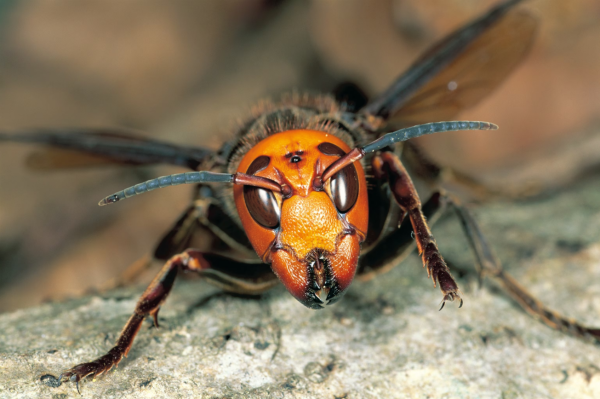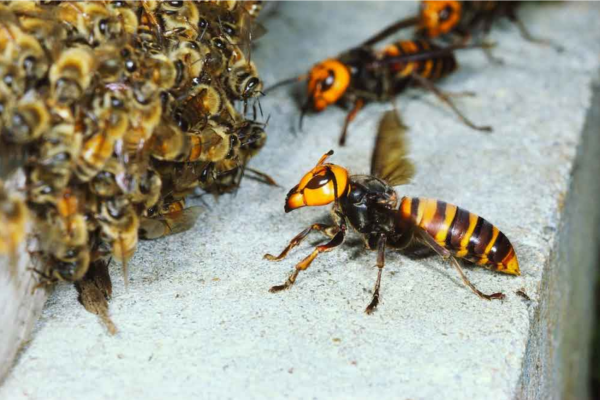An invasive insect called the Southern giant hornet, or Vespa soror, has the attention of scientists everywhere. They were originally from areas of Asia, but now have spread all over the globe, more specifically in Europe and the South U.S. This breed of hornet is nicknamed the “murder hornet” because it targets and kills insects such as butterflies, dragonflies, grasshoppers, wasps, and smaller hornets.
However, it is most commonly known for going after European and Japanese honey bees.
When put into groups, these animals have the power to wipe out an entire bee hive in a matter of hours.
The Southern giant hornets often have scouts who leave their nest, searching for surrounding insects to prey on. When they find a hive, the scouts start by removing the guards and leaving a pheromone marker that attracts other hornets to follow the scent.

The numbers differ regarding how many hornets are required for taking over and attacking a hive, but an average of around 50 is enough. The main strategy they use for killing honey bees is decapitating them with mandibles, a bone in their jaw that sticks out as a powerful mouthpiece. European honey bee hives have no good defenses against these invasive hornets, and consequently, hives can die quickly.
On the other side of the world, the Japanese honey bees have grown skills to stop hornets from killing entire hives. When the hornet scouts arrive at a nest, the Japanese honey bees draw them in with the scent of honey. After that, the bees wait until the scouts attack first, and when they do, the bees swarm the scouts.
The Southern giant hornets have a heat tolerance of around 113 degrees Fahrenheit, while honeybees can withstand up to 122 degrees Fahrenheit. With the honey bees’ high tolerance for heat, they can suffocate the scout hornets by attacking all at once, slowly bringing up the temperature in the hive. This results with the death of the scout hornets, before they have the chance to mark the hive for others to follow. If this doesn’t work in time before the scouts mark the hive with the pheromone, the Japanese honey bees will have no other choice but to abandon the hive and start again somewhere else.

These hornets are very damaging to insects and bugs throughout Europe, the U.S. and Asia. This is why scientists are trying to locate the nests of these hornets in order to remove them for good. The nests are papery, roundly shaped and can be found far into forested areas and up to 30 meters under the ground. This makes it very difficult to locate these nests, making the process of finding them ongoing.
Honey bees have a constant struggle to stay alive and maintain a large population. They are overall vulnerable and can be wiped out easily, so it is important to get rid of these hornets. Humans have a beneficial relationship with honey bees, and if honey bees were to go away, it could stop pollination for plants. To prevent that from happening we need to care for them better and count threats to their lives as threats to our own.



























